
Intel Pentium G4400T Benchmark, Test and specs
Last updated:
The Intel Pentium G4400T has 2 cores with 2 threads and is based on the 6. gen of the Intel Pentium series. The processor uses a mainboard with the LGA 1151 socket and was released in Q3/2015. The Intel Pentium G4400T scores 721 points in the Geekbench 5 single-core benchmark. In the Geekbench 5 multi-core benchmark, the result is 1,430 points.
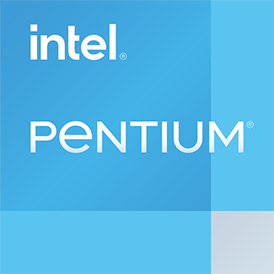
| Name: | Intel Pentium G4400T |
|---|---|
| Family: | Intel Pentium (150) |
| CPU group: | Intel Pentium G4000 (5) |
| Architecture: | Skylake S |
| Segment: | Desktop / Server |
| Generation: | 6 |
| Predecessor: | Intel Pentium G3440T |
| Successor: | Intel Pentium Gold G5400T |
CPU Cores and Base Frequency
The Intel Pentium G4400T has 2 CPU cores and can calculate 2 threads in parallel. The clock frequency of the Intel Pentium G4400T is 2.90 GHz. The number of CPU cores greatly affects the speed of the processor and is an important performance indicator.
| CPU Cores / Threads: | 2 / 2 |
|---|---|
| Core architecture: | normal |
| Cores: | 2x |
| Hyperthreading / SMT: | No |
|---|---|
| Overclocking: | No |
| Frequency: | 2.90 GHz |
| Turbo Frequency (1 Core): | -- |
| Turbo Frequency (2 Cores): | -- |
Internal Graphics
The Intel Pentium G4400T has integrated graphics, called iGPU for short. Specifically, the Intel Pentium G4400T uses the Intel HD Graphics 510, which has 96 texture shaders and 12 execution units. The iGPU uses the system's main memory as graphics memory and sits on the processor's die.
| GPU name: | Intel HD Graphics 510 |
|---|---|
| GPU frequency: | 0.35 GHz |
| GPU (Turbo): | 0.95 GHz |
| Compute units: | 12 |
| Shader: | 96 |
| Hardware Raytracing: | No |
| Release date: | Q1/2015 |
| Max. displays: | 3 |
|---|---|
| Generation: | 9 |
| Direct X: | 12.0 |
| Technology: | 14 nm |
| Max. GPU Memory: | 32 GB |
| Frame Generation: | No |
Hardware codec support
A photo or video codec that is accelerated in hardware can greatly accelerate the working speed of a processor and extend the battery life of notebooks or smartphones when playing videos.
| h265 / HEVC (8 bit): | Decode / Encode |
|---|---|
| h265 / HEVC (10 bit): | Decode |
| h264: | Decode / Encode |
| VP8: | Decode / Encode |
| VP9: | Decode |
| AV1: | No |
|---|---|
| AVC: | Decode / Encode |
| VC-1: | Decode |
| JPEG: | Decode |
Memory & PCIeThe processor can use up to 64 GB memory in 2 (Dual Channel) memory channels. The maximum memory bandwidth is 34.1 GB/s. The memory type as well as the amount of memory can greatly affect the speed of the system. |
|
| Memory type: | Memory bandwidth: |
|---|---|
| DDR4-2133 | 34.1 GB/s |
| Max. Memory: | 64 GB |
| Memory channels: | 2 (Dual Channel) |
| ECC: | Yes |
| PCIe: | 3.0 x 16 |
| PCIe Bandwidth: | 15.8 GB/s |
Thermal ManagementThe thermal design power (TDP for short) of the processor is 35 W. The TDP specifies the necessary cooling solution that is required to cool the processor sufficiently. The TDP usually gives a rough idea of the actual power consumption of the CPU. |
|
|---|---|
| TDP (PL1 / PBP): | 35 W |
| TDP (PL2): | -- |
| TDP up: | -- |
| TDP down: | -- |
| Tjunction max.: | -- |
Technical details
The Intel Pentium G4400T is made in 14 nm. The smaller the manufacturing process of a CPU, the more modern and energy-efficient it is. Overall, the processor has 3.00 MB cache. A large cache can greatly speed up the processor's speed in some cases such as games.
| Technology: | 14 nm |
|---|---|
| Chip design: | Monolithic |
| Socket: | LGA 1151 |
| L2-Cache: | -- |
| L3-Cache: | 3.00 MB |
| AES-NI: | Yes |
| Operating systems: | Windows 10, Linux |
| Virtualization: | VT-x, VT-x EPT, VT-d |
|---|---|
| Instruction set (ISA): | x86-64 (64 bit) |
| ISA extensions: | SSE4.1, SSE4.2 |
| Release date: | Q3/2015 |
| Release price: | 64 $ |
| Part Number: | -- |
| Documents: | Technical data sheet |
Rate this processor
Benchmark results

The benchmark results for the Intel Pentium G4400T have been carefully checked by us. We only publish benchmark results that have been created by us or that have been submitted by a visitor and then checked by a team member. All results are based on and fullfill our benchmark guidelines.
Geekbench 5, 64bit (Single-Core)
Geekbench 5 is a cross plattform benchmark that heavily uses the systems memory. A fast memory will push the result a lot. The single-core test only uses one CPU core, the amount of cores or hyperthreading ability doesn't count.
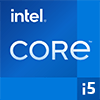
|
Intel Core i5-2450P
4C 4T @ 3.50 GHz |
||

|
Intel Core i5-2390T
2C 4T @ 3.50 GHz |
||

|
Intel Xeon X3470
4C 8T @ 3.60 GHz |
||
|
|
Intel Pentium G4400T
2C 2T @ 2.90 GHz |
||
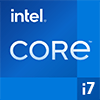
|
Intel Core i7-4712MQ
4C 8T @ 3.30 GHz |
||

|
Intel Pentium G3258
2C 2T @ 3.20 GHz |
||

|
Intel Pentium G3420
2C 2T @ 3.20 GHz |
||
Geekbench 5, 64bit (Multi-Core)
Geekbench 5 is a cross plattform benchmark that heavily uses the systems memory. A fast memory will push the result a lot. The multi-core test involves all CPU cores and taks a big advantage of hyperthreading.

|
Intel Core i5-3230M
2C 4T @ 2.60 GHz |
||

|
AMD A10-6700
4C 4T @ 4.30 GHz |
||

|
Intel Core i7-2640M
2C 4T @ 2.80 GHz |
||
|
|
Intel Pentium G4400T
2C 2T @ 2.90 GHz |
||
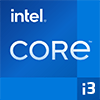
|
Intel Core m3-8100Y
2C 4T @ 1.10 GHz |
||

|
Intel Core m5-6Y54
2C 4T @ 2.10 GHz |
||

|
Intel Core i3-4110M
2C 4T @ 2.60 GHz |
||
Geekbench 6 (Single-Core)
Geekbench 6 is a benchmark for modern computers, notebooks and smartphones. What is new is an optimized utilization of newer CPU architectures, e.g. based on the big.LITTLE concept and combining CPU cores of different sizes. The single-core benchmark only evaluates the performance of the fastest CPU core, the number of CPU cores in a processor is irrelevant here.

|
Intel Core i3-5005U
2C 4T @ 2.00 GHz |
||

|
Intel Core i7-2860QM
4C 8T @ 3.60 GHz |
||

|
Intel Xeon D-1577
16C 32T @ 2.10 GHz |
||
|
|
Intel Pentium G4400T
2C 2T @ 2.90 GHz |
||

|
Intel Pentium G3250
2C 2T @ 3.20 GHz |
||

|
Intel Pentium G4560T
2C 4T @ 2.90 GHz |
||

|
Intel Core i7-970
6C 12T @ 3.46 GHz |
||
Geekbench 6 (Multi-Core)
Geekbench 6 is a benchmark for modern computers, notebooks and smartphones. What is new is an optimized utilization of newer CPU architectures, e.g. based on the big.LITTLE concept and combining CPU cores of different sizes. The multi-core benchmark evaluates the performance of all of the processor's CPU cores. Virtual thread improvements such as AMD SMT or Intel's Hyper-Threading have a positive impact on the benchmark result.
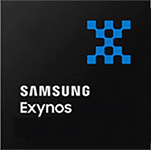
|
Samsung Exynos 9610
8C 8T @ 2.30 GHz |
||

|
Intel Core i3-2105
2C 4T @ 3.10 GHz |
||

|
Intel Core i7-3689Y
2C 4T @ 1.50 GHz |
||
|
|
Intel Pentium G4400T
2C 2T @ 2.90 GHz |
||

|
Intel Core i5-3427U
2C 4T @ 1.80 GHz |
||

|
Intel Core i5-4302Y
2C 4T @ 2.00 GHz |
||

|
Intel Celeron G3900
2C 2T @ 2.80 GHz |
||
iGPU - FP32 Performance (Single-precision GFLOPS)
The theoretical computing performance of the internal graphics unit of the processor with simple accuracy (32 bit) in GFLOPS. GFLOPS indicates how many billion floating point operations the iGPU can perform per second.

|
AMD A4-4000
AMD Radeon HD 7480D @ 0.72 GHz |
||

|
AMD A4-5150M
AMD Radeon HD 8350G @ 0.72 GHz |
||

|
Intel Pentium G3420
Intel HD Graphics (Haswell GT1) @ 1.15 GHz |
||
|
|
Intel Pentium G4400T
Intel HD Graphics 510 @ 0.95 GHz |
||

|
Intel Celeron G3930TE
Intel HD Graphics 610 @ 0.95 GHz |
||

|
Intel Core i7-2617M
Intel HD Graphics 3000 @ 0.95 GHz |
||

|
Intel Core i3-2357M
Intel HD Graphics 3000 @ 0.95 GHz |
||
Estimated results for PassMark CPU Mark
Some of the CPUs listed below have been benchmarked by CPU-monkey. However the majority of CPUs have not been tested and the results have been estimated by a CPU-monkey’s secret proprietary formula. As such they do not accurately reflect the actual Passmark CPU mark values and are not endorsed by PassMark Software Pty Ltd.

|
Qualcomm Snapdragon 660
8C 8T @ 2.20 GHz |
||

|
Qualcomm Snapdragon 660 non LTE
8C 8T @ 2.20 GHz |
||

|
AMD Athlon II X4 651
4C 4T @ 3.00 GHz |
||
|
|
Intel Pentium G4400T
2C 2T @ 2.90 GHz |
||
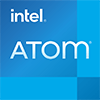
|
Intel Atom C2550
4C 4T @ 2.60 GHz |
||

|
Intel Pentium Gold 6405U
2C 4T @ 2.40 GHz |
||

|
Intel Core i5-2540M
2C 4T @ 2.60 GHz |
||
Cinebench R15 (Single-Core)
Cinebench R15 is the successor of Cinebench 11.5 and is also based on the Cinema 4 Suite. Cinema 4 is a worldwide used software to create 3D forms. The single-core test only uses one CPU core, the amount of cores or hyperthreading ability doesn't count.

|
Intel Core i5-4300M
2C 4T @ 3.30 GHz |
||

|
Intel Core i5-4430
4C 4T @ 3.20 GHz |
||

|
Intel Core i5-4570R
4C 4T @ 3.20 GHz |
||
|
|
Intel Pentium G4400T
2C 2T @ 2.90 GHz |
||

|
Intel Core i7-4550U
2C 4T @ 3.00 GHz |
||
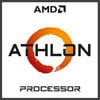
|
AMD Athlon Gold 3150U
2C 4T @ 3.30 GHz |
||

|
Intel Celeron G3930T
2C 2T @ 2.70 GHz |
||
Cinebench R15 (Multi-Core)
Cinebench R15 is the successor of Cinebench 11.5 and is also based on the Cinema 4 Suite. Cinema 4 is a worldwide used software to create 3D forms. The multi-core test involves all CPU cores and taks a big advantage of hyperthreading.

|
AMD A12-9700P
4C 4T @ 2.70 GHz |
||

|
Intel Core i5-3437U
2C 4T @ 1.90 GHz |
||

|
Intel Core i3-5010U
2C 4T @ 2.10 GHz |
||
|
|
Intel Pentium G4400T
2C 2T @ 2.90 GHz |
||

|
Intel Celeron G3930T
2C 2T @ 2.70 GHz |
||

|
Intel Celeron G3930
2C 2T @ 2.90 GHz |
||

|
Intel Celeron G3920
2C 2T @ 2.90 GHz |
||
Benchmarks

Geekbench 5 (SC)
2,488 entries
2,488 entries

Geekbench 5 (MC)
2,461 entries
2,461 entries

Geekbench 6 (SC)
1,755 entries
1,755 entries

Geekbench 6 (MC)
1,703 entries
1,703 entries

FP32 SP (iGPU)
2,042 entries
2,042 entries

PassMark CPU-Mark
2,392 entries
2,392 entries

Cinebench R15 (SC)
1,106 entries
1,106 entries

Cinebench R15 (MC)
1,101 entries
1,101 entries

Geekbench 3 (SC)
942 entries
942 entries

Geekbench 3 (MC)
938 entries
938 entries

Cinebench R11.5 (SC)
825 entries
825 entries

Cinebench R11.5 (MC)
836 entries
836 entries

Cinebench R11.5 iGPU
383 entries
383 entries
Description of the processor
The Intel Pentium G4400T is a dual-core desktop processor from Intel that is in the lower price and performance segment. The Intel Pentium G4400T can operate its two equally large CPU cores with a clock frequency of 2.9 GHz. In contrast to the more powerful processors of the Intel Core i series from Intel, the Intel Pentium G4400T does not have a turbo mode and cannot further increase its clock frequency.The Intel Pentium G4400T does not support Intels Hyperthreading technology and can therefore only process two threads at the same time. The processor has an integrated graphics unit, also called iGPU. Specifically, the Intel HD Graphics 510 is used in the Intel Pentium G4400T. With only 12 execution units and 96 texture shaders, this has low performance, but is suitable for light office work and can also decode modern video codes in hardware.
Up to 64 gigabytes of RAM can be connected to the system. The Intel Pentium G4400T supports memory modules up to DDR4-2133 in two memory channels. The maximum memory bandwidth in dual-channel mode is 34 GB per second.
External devices such as a dedicated graphics card can be connected via a total of 16 PCIe 3.0 lines. Intel specifies the thermal design power of the Intel Pentium G4400T as 35 watts. The Intel Pentium G4400T with the "Skylake" architecture is manufactured by Intel in a 14 nm process. The LGA 1151 (1st version) is used as the socket. The Intel Pentium G4400T has up to 3 MB level 3 cache and is suitable for both Windows and Linux systems. Since it is quite energy-efficient, the processor is also suitable for smaller home servers or NAS systems, for example.
The Intel Pentium G4400T was released in the 3rd quarter of 2015 for a price of 64 USD.
Popular comparisons
back to index




